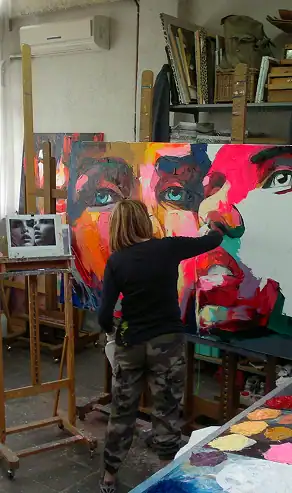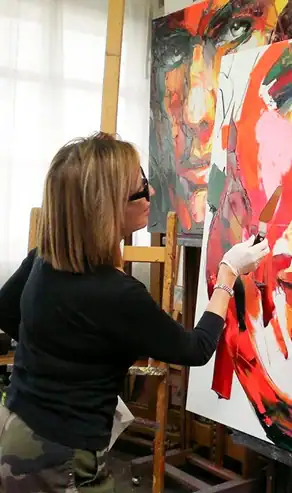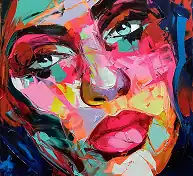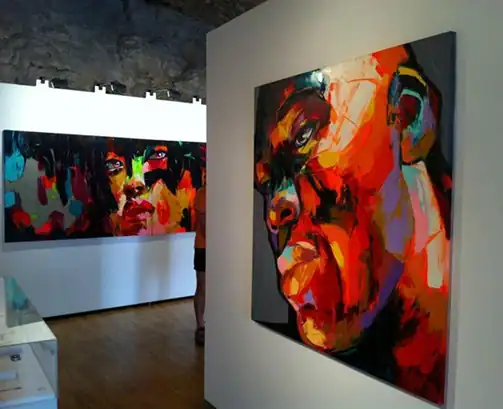

Françoise Nielly est une artiste contemporaine française dont les portraits éclatent de couleurs et d’émotions. De Paris à Tokyo, ses œuvres ont été exposées dans de nombreuses galeries internationales.
Peindre est chez elle un acte instinctif et viscéral. Le couteau remplace le pinceau, la matière devient vivante, l’huile se heurte à la toile avec intensité. Dans cet équilibre entre maîtrise et impulsion, elle crée des visages puissants, traversés par la lumière, la force et une fragilité palpable.
Visages fragiles, agiles, beaux — de face comme de profil, à tout âge.
Des regards : profonds, pudiques, déterminés, parfois troublants.
Hommes et femmes apparaissent alors, sublimés, révélés, offerts au monde avec sincérité.
Chaque tableau porte en lui un fragment d’humanité, une vibration unique. Peindre, pour Françoise, n’est pas un geste réfléchi : c’est une nécessité, un bonheur brut, une énergie vitale.
Pour Françoise Nielly, peindre est un dialogue silencieux entre la couleur et l’âme. Chaque trait, chaque éclat, naît d’un élan sincère, presque instinctif, qui relie la main au cœur sans détour.
Son couteau, prolongement de son intuition, ne dessine pas simplement des visages : il révèle des présences. Elle sculpte la lumière, modèle les émotions, et offre à la toile des portraits vibrants d’humanité, où se mêlent force et délicatesse.
Il ne s’agit pas de reproduire le réel, mais de faire affleurer l’invisible : une émotion, un souvenir, un regard intérieur. Chaque œuvre devient alors un espace suspendu, entre tension et harmonie, où le spectateur peut reconnaître une part de lui-même.
Loin du conformisme et de la retenue, Françoise Nielly propose une peinture vivante, sensible, habitée. Une peinture qui touche, qui élève, et qui laisse une empreinte — comme un souffle de lumière posé sur le monde.



Pour offrir les meilleures expériences, nous utilisons des technologies comme les cookies pour stocker et/ou accéder aux informations de l'appareil. Consentir à ces technologies nous permettra de traiter des données telles que le comportement de navigation ou des identifiants uniques sur ce site. Ne pas consentir ou retirer son consentement peut affecter certaines fonctionnalités.